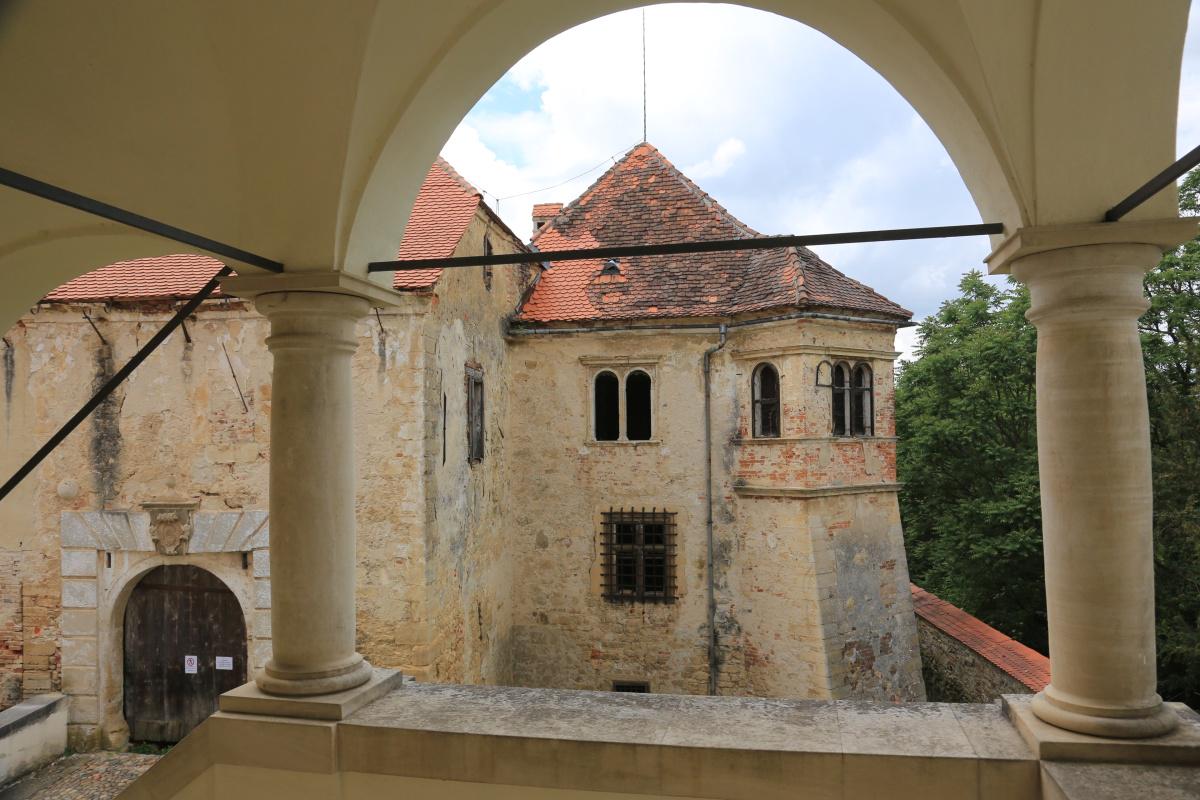
The castle, which stands proudly amid the gently rolling hills of this bucolic landscape, had its origins as a hunting lodge. From the 16th to the 20th century, the castle was owned by a single noble family, the Trautmannsdorfs. During that time, it was renovated many times. In the 17th century, for instance, the family replaced an older building with an imposing Renaissance structure.
Throughout its history, the castle faced many dangers, including repeated attacks from the Ottoman Turks. According to a local legend, a Turkish man who managed to scale the castle’s high walls was captured and then immured in the dungeon. A late-gothic mask in that spot is still known as the “Turk’s Head.” A series of ponds and trenches also doubled as a protective moat around the castle. At one time, three drawbridges spanned the ponds.
Some of those ponds were eventually joined up to create a lake. After the castle was nationalized in the wake of World War II, the lake became a popular swimming site for the locals from the nearby villages. For a while, the lake was regularly cleaned, but when the local authorities stopped clearing the debris several decades ago, it quickly became overgrown with weeds. These days, Lake Negova is no longer suitable for swimming, but it is the home of abundant plant and animal life.
The European white waterlily and the yellow waterlily both thrive in the area, while aquatic animals from crawfish to eels are commonly seen in the lake. Even otters are known to live in and around Lake Negova; they vanished for several years after a nearby stream was regulated, but they have recently returned in part because a new water treatment plant has improved the quality of the water. And the local environment, created by natural as well as manmade processes, is now officially protected as the Lake Negova Landscape Park.
The local authorities are now working on a project that would make Lake Negova a tourist destination in this often-forgotten part of Slovenia. A part of the lake would be cleaned and once again made into a swimming area, while much of it would be left untouched – a place where native plants and animals could continue to thrive amid the rolling hills of Prlekija.

































































